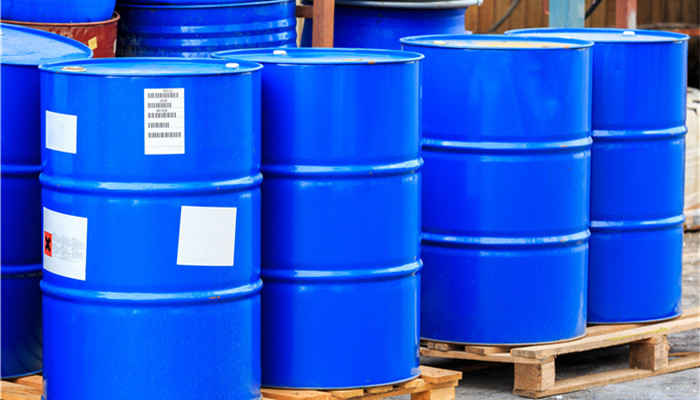
China’s sodium methyl mercaptide industry faces environmental protection policy restrictions and there are many problems in industry development
Sodium methylmercaptide is an important organic intermediate compound with the chemical formula CH3SNa. It is a liquid strong alkaline solution with a foul smell. It is easily soluble in water and methanol, but insoluble in ether. Sodium methylmercaptide is flammable, explosive and toxic, and appears as a colorless or slightly yellow liquid or solid. Sodium methyl mercaptide can be used in the synthesis of pesticides, medicines, dye intermediates and various spices and other products, such as: used in the preparation of daily and edible flavors methyl ethyl sulfide, 4-methylthio-2-butanone, 2-Methylthiopyrazine, the synthetic pesticides methomyl, atrafenazine, prometryn, citrazine and the prepared organic solvent dimethyl sulfoxide, etc., can also be used as an antidote for hydrogen sulfide poisoning. In addition, sodium methylmercaptide is also used as a raw material for vitamin U and rubber vulcanizing agents; as an odorant for coal gas and natural gas, etc.
China’s sodium methylmercaptide industry developed with the rise of the pesticide industry. From the 1980s to the mid-1990s, the domestic pesticide industry developed rapidly, and the research and development and production of sodium methylmercaptide began to receive attention, and industrialized production was gradually realized. With further in-depth research, the application scale of sodium methylmercaptide in the fields of medicine and dyes has also continued to expand. With cheap labor and huge demand market, China has gradually become the world’s largest producer and consumer of sodium methylmercaptide. However, in recent years, the Chinese government has continued to increase environmental protection efforts, and a large number of sodium methylmercaptide production companies have withdrawn from the market. At the same time, some sodium methylmercaptide companies have gradually moved to the central and western regions. Analysts believe that the development of China’s sodium methyl mercaptide industry has the following problems:
1. Small market size
Sodium methylmercaptide is an organic chemical synthesis raw material that can be widely used in pesticides, medicines, dyes, odorants and other fields. However, the application scale in each field is relatively limited, resulting in a relatively small market size. According to the released “2021 Sodium Methyl Sulfide Industry Development Status and Investment Strategy Suggestions Report“, in 2020, China’s methyl sulfide The market size of sodium alcohol is less than 200 million yuan. The smaller market size limits the industrialization and large-scale development of the sodium methylmercaptide industry, and is not conducive to increasing the enthusiasm of sodium methylmercaptide companies to expand investment in R&D, production and other aspects, becoming an important factor hindering the development of the industry.
2. Serious environmental pollution
The sodium methyl mercaptide industry is a highly polluting industry. At present, the continuous and clean production technology level of my country’s sodium methyl mercaptide production enterprises needs to be improved. High-concentration wastewater, waste salt, and methyl sulfide odorous gases such as methyl sulfide and methyl mercaptan are needed. Disposal technology also needs to be tackled urgently, which is also a common problem faced by the sodium methyl mercaptide industry across the country. At present, only the bulk products of large enterprises in the industry can recover waste water and waste gas. Most small products and small enterprises do not have waste water and waste gas recovery equipment and technology. Unreacted raw materials, intermediates and by-products are discharged in the form of “three wastes” , resulting in low resource utilization and great impact on the environment.
3. Downstream application fields are relatively concentrated
At present, the application of sodium methylmercaptide is mainly concentrated in the field of pesticides, with an application ratio of 54.3%. It is used to synthesize methomyl, thiodicarb, atrafenacet, prometryn, etc., and in medicines, dyes, odorants, etc. There are relatively few applications in the production of sodium methyl mercaptide. From this point of view, the concentration of sodium methyl mercaptide in the downstream application fields is high, which is not conducive to reducing market risks, increasing the operating income of sodium methyl mercaptide production enterprises and expanding the sales of sodium methyl mercaptide. Market demand.

 微信扫一扫打赏
微信扫一扫打赏

